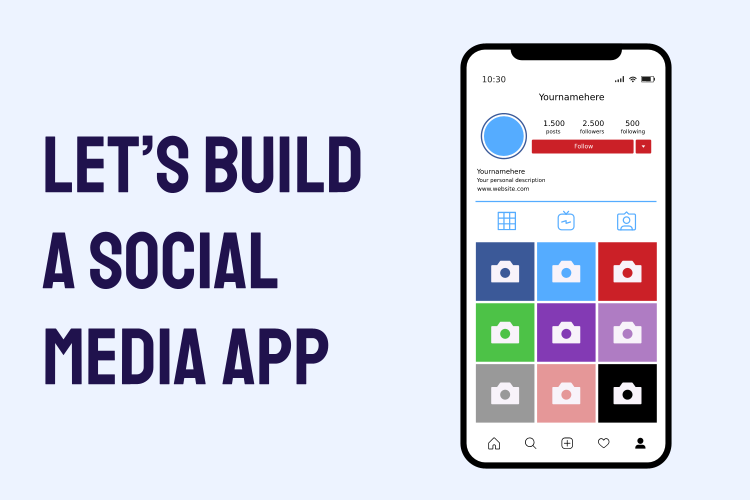Have you ever questioned how much you should charge for your software development services? Are you struggling to find the right pricing model that balances profitability and competitiveness? Do you wonder how to adapt your pricing strategy in an ever-changing market? These are crucial questions that each software development companies have to consider to survive.
According to a report by PricewaterhouseCoopers (PwC), many software development companies in the USA face struggles in pricing their services, and as a result, they either overprice or underprice their products and services. The problem is further accentuated by the McKinsey’s analysis pointing towards the inability of these companies to adopt new pricing models that take into consideration the dynamic nature of the market and customer behavior. This issue hampers business growth and profitability, and hence, there is an imminent need for a comprehensive guide to address this pressing issue within the USA market.
In this article, you will learn about various pricing models that software development companies can adopt to maximize their revenue and profitability. This guide will provide a detailed comparison of these models, highlighting their advantages and disadvantages. The focus will then shift to understanding the unique business landscape in the USA, and how these pricing models can be applied effectively in this context.
Furthermore, the article dives deeper into the effective methods to implement these pricing models, backed by real-life examples of successful pricing strategies. It will also shed light on how changes in market conditions should influence your pricing decisions. Lastly, it offers predictions on the future of pricing models in the software development industry. The article aims to provide a comprehensive guide to any software development company looking to maximize their profitability.

Understanding the Key Definitions Related to Pricing Models for Software Development Companies
Pricing Models: They refer to the various strategies that software development companies employ to price their products or services. This may be flat-rate, per-hour, milestone-based or value-based pricing.
Software Development: The process of designing, specifying, programming, documenting, testing, and bug fixing involved in creating and maintaining applications, frameworks, or other software components.
Companies: Legal entities formed by one or more persons to carry on a particular business or enterprise, in this case, offering software development services.
Software Development Companies: Entities specialising in providing services related to creating, maintaining, and executing software according to the clients’ needs
Capitalizing Profits: Why Robust Pricing Models Matter for Software Development Companies
Understanding the Importance of Pricing Models
In the software development industry, having a comprehensive pricing model is crucial. It directly impacts a company’s ability to generate consistent revenues and robust profit margins. Without a carefully crafted and well-implemented pricing model, software development companies may struggle to achieve sustainable profitability or even maintain operational feasibility. As such, a robust pricing model plays a cornerstone role in capitalizing profits and sustaining the business in the long run.
Identifying the Key Components in Software Pricing Models
Software pricing models usually bring together several different components. This complexity necessitates a nuanced understanding of each component’s role and how they interact with each other to jointly influence pricing decisions. Essentially, the selection, structure, and implementation of pricing models can drive sales, impact market positioning, and ultimately dictate a company’s profitability and growth potential.
- Choice of Pricing Strategy: Whether it’s a one-time purchase, a subscription model, or a freemium model, the choice of a pricing strategy can directly influence a company’s revenue trajectory and customer acquisition efforts.
- Feature-based Pricing: Deciding which features to include in the base price and which ones to offer as additional cost increases customer perceived value and allows businesses to cater to a wider market spectrum.
- Market and Competitive Analysis: Understanding the market dynamics and competitor pricing can guide a software company to strategically position its product pricing.
Software pricing models are more than just applying mathematical formulas or adhering to industry standards. They require a robust analysis of internal cost structures, competitor pricing, target customer segments, perceived value, and strategic business goals, among other factors. Also, software development companies should regularly revisit and revisit the pricing models to align with the changing market trends, customer expectations, and company strategy.
It’s important to notice that the same software might not be equally valuable to all customers, and therefore, a one-size-fits-all pricing strategy might lead to missed opportunities. Instead, companies should focus on offering tailored pricing that fits specific customer needs. You can leverage customer segmentation, usage-based pricing, and tiered pricing strategies to match different customer values. Effective customer value analysis and segmentation, along with targeted marketing, can be instrumental in optimizing the pricing model for profitability.
By making the pricing strategy more dynamic and adaptable, software companies can switch between different strategies based on the changes in the competitive landscape, technological advancements, and customer preferences. At the end of the day, a robust pricing model focuses on striking a balance between value for customers and profits for the company. The key lies in understanding that pricing is a strategic tool that can be used to drive growth, profitability, and creating a competitive edge.
Delving Into the Depths: Evaluating Different Pricing Models for Software Development Businesses
Unraveling Pricing Complications: How Do Businesses Get it Wrong?
Have you ever wondered why some software development companies thrive while others barely survive, despite similar services and quality? The mystery often lies not in the product, but in the pricing structure. Yes, pricing models can leave or bring a significant impact on business success. Misaligned pricing models can dissuade clients, add complexity to sales processes, and cut profits. Hence, choosing the wrong pricing approach could lead to declining business performance and profitability. The core problem is the failure to comprehend that pricing is much more than just identifying a figure. It encompasses market research, financial analysis, understanding client’s value perception and periodically reviewing the models to meet industry trends.
Understanding the Crux of Misalignment in Pricing Models
The major issue causing this predicament is the misunderstanding or lack of knowledge about the ideal pricing model. Businesses often resort to a cost-based pricing approach, which means calculating the costs incurred in the service and adding a markup. While this simplicity seems appealing, it side-tracks from the foundational aim of pricing models. It’s crucial to consider factors such as market demand, competition, perceived value, and potential for repeat business. Also, overlooked is the need for creating different pricing tiers to cater to different clients with varied budgets, requirements, and value perception. Leaving out any of these essential factors can result in misaligned pricing that neither reflects the value nor attracts the worthy clientele.
Illustrations of Success: Models that Really Work
Let’s look at some software development companies that have mastered their pricing strategies to achieve success. Firstly, the Saas model, where the customer pays a subscription fee for accessing the service, proves beneficial for both the parties. It provides predictable revenue to the business and lower upfront costs to the client. A prime example of this is the monumental success of Adobe, that switched from traditional licensing to subscriptions and increased its market reach and revenue. Secondly, the value-based pricing where price is set according to customer’s perceived value of the software; Apple exemplifies this pricing model by selling its software at premium rates, by building on its brand value and exceptional quality. Lastly, the freemium pricing model adopted by companies like Dropbox, providing a basic free version, with upgrades available for a fee. This approach brings a broad user base, some of whom will inevitably convert to paying customers. By understanding these successful models, software development companies can make more informed decisions and create supportive pricing structures that benefit all stakeholders.
Generating Growth: Implementing Effective Pricing Models in the Software Development Industry
Are You Utilizing the Most Profitable Pricing Model?
To yield the maximum profit, it is imperative to choose an appropriate methodology that aligns with the service being offered. With technological advancements, a myriad of pricing strategies exist. However, the challenge that most streamlined software firms face today is identifying which pricing model will best suit their business requirements and yield the highest profit margins.
Software development cost estimation can be a sensitive issue that is often fraught with assumptions and uncertainties. To navigate these complex waters, many business leaders opt for traditional pricing models, such as fixed price or time & materials. However, these models often bottleneck the potential for growth and innovation in the software development industry.
The Core Challenge: Adjusting Legacy Pricing Schemes
One significant difficulty that companies face is adjusting to newer, more modern pricing schemes. Most software developers are still sticking to the outdated pricing models that charge based on time & materials or a fixed rate. While these methods were once advantageous, they are now hindering business growth due to their inflexibility and lack of adaptability to the dynamic nature of the digital realm.
Indeed, rigid pricing structures are notoriously ineffective at accommodating variable demands, which is exacerbated in the fast-paced industry of software development. Furthermore, clients are becoming increasingly more au fait with the industry and demand greater value and optimal solutions, instead of just bare-boned services.
Successful Pricing Models in the Modern Software Industry
Despite these challenges, some trailblazing companies have redesigned their pricing structures and seen impressive growth as a result. For example, companies like Basecamp succeeded by implementing subscription-based pricing models. Their strategy provides a predictable and consistent revenue stream, while also being flexible to accommodate varying customer requirements.
Another innovative approach is the value-based pricing model, utilized skillfully by companies like Adobe. In such a model, customers are charged based on the perceived value of the solution rather than just the time invested in its development. This allows businesses to reap greater profits, especially if their solution provides a one-of-a-kind answer to a unique customer problem.
These are just two examples of how flexible, client-focused pricing models can clear the way for significant growth in the software development industry. Companies that dare to break away from traditional pricing models and look towards innovative, growth-focussed alternatives are the ones that truly thrive.
Conclusion
Reflecting on the myriad of strategies available for pricing in software development companies, the question that emerges is – Have we found the one that best suits the dynamic and evolving landscape of technology and business? Throughout the detailed analysis of various pricing models, one finds no single correct answer. Each model, whether it be Fixed Price, Time & Material, Milestone-based, or the hybrid ones, has its own strengths and needs, reflecting the diverse nature of software development projects. The optimal decision fluctuates depending on the client’s requirements, project scope, market trends, and the inherent uncertainties of the innovation process.
In this evolving digital environment, staying updated and informed is of paramount importance. Understanding this need for continued learning, we invite you to connect with us and become a part of our knowledge-sharing community. By following our blog, you will get access to regular insights, expert opinions, and interpretative analysis structured from experience and data, all curated to help you make informed decisions for your software development company. Transparency, usefulness, and relevance form the core of the content we share.
However, our quest for exploring newer perspectives never stops. As we continue to delve deep into the challenging world of software development, we want to ensure that you are at the forefront of receiving the latest insights. We are currently working on several interesting topics that are lined up for release in the coming weeks. We promise they would be worth the wait. Our upcoming releases embody topics aimed at helping software developers and companies alike in nurturing businesses, cultivating innovation, ensuring project success, and deciphering emerging trends. So, let’s embark on this journey together, for learning is a never-ending process, and the next big idea might just be a blog post away.
F.A.Q.
FAQ Section
Q1: What are some common pricing models adopted by software development companies?
A: Several software development companies adopt pricing models such as Time and Materials, Fixed Bid, and Milestone-based pricing. These models have specific advantages and downsides which influenced by factors like project complexity, duration, and risk levels.
Q2: How does the Time and Materials pricing model work?
A: The Time and Materials pricing model charges clients based on the time and resources utilized for their project. This model offer flexibility as it allows to adjust project requirements and scope as it unfolds.
Q3: Can you elaborate on the Fixed Bid pricing model?
A: The Fixed Bid model essentially offers a fixed price for the entire project irrespective of time and resources. This model suits best for projects with clearly defined requirements and a predetermined budget.
Q4: What is Milestone-based pricing and where is it most used?
A: Milestone-based pricing is when payments are made after reaching certain project milestones. It’s typically used in large-scale projects with a clear sequence of tasks that must be completed in parts.
Q5: How does a software development company choose the right pricing model?
A: The right pricing model is chosen based on the project requirements, client’s budget, the complexity of the project, and level of uncertainty. It’s important for companies and clients to clearly understand the pros and cons of each model before making a decision.


